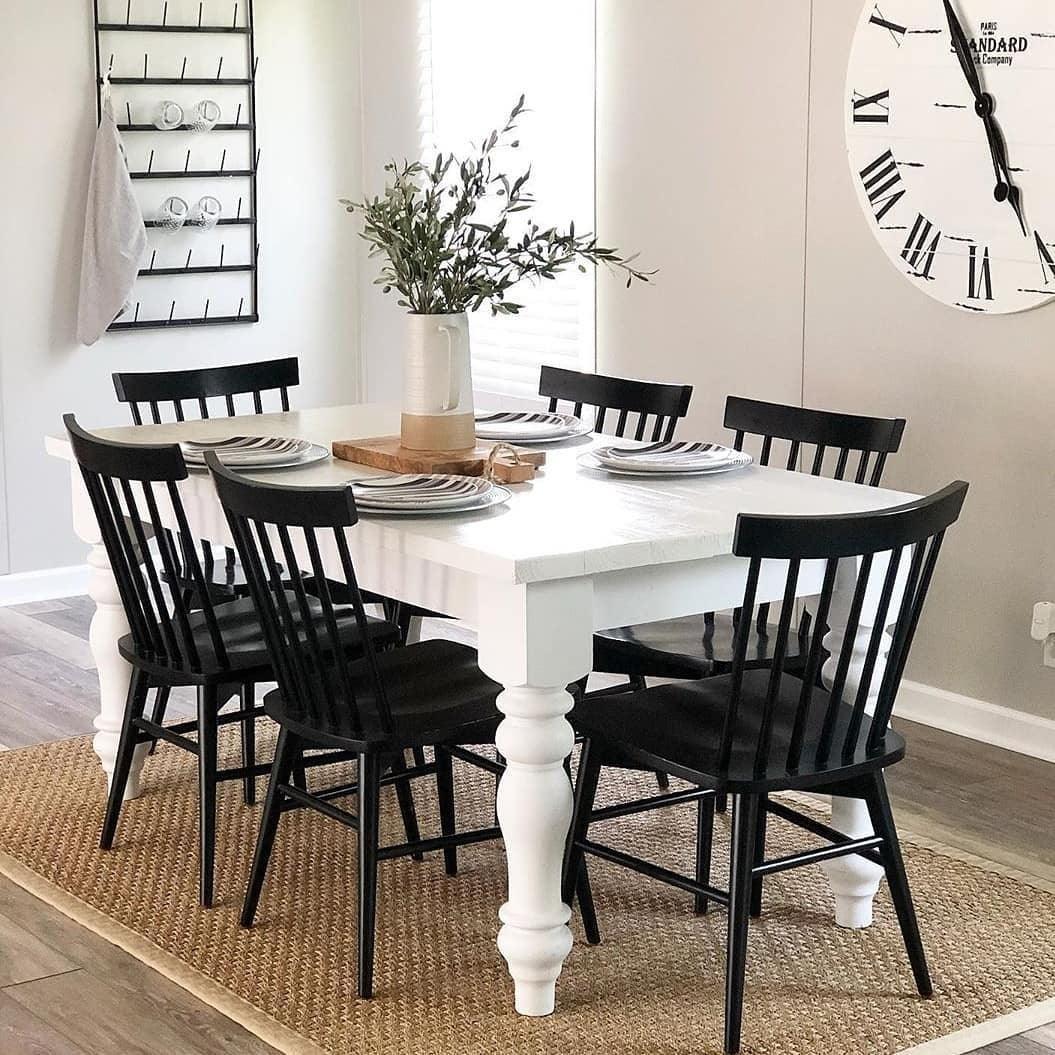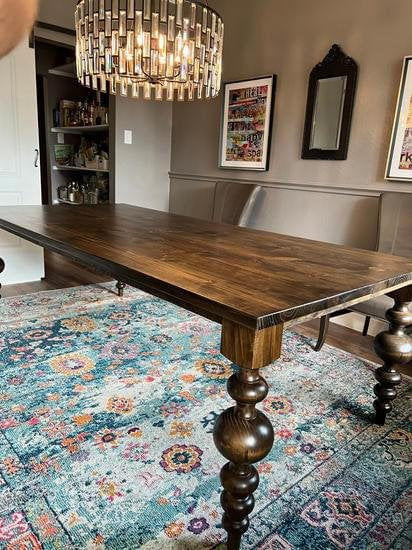Upgrade Your Furniture with Custom Dining Room Table Legs
Upgrade Your Furniture with Custom Dining Room Table Legs
Blog Article
How to Pick the Perfect Dining Room Table Legs for Your Home Décor
Selecting the ideal dining space table legs is a nuanced procedure that calls for careful consideration of numerous elements, including your room restrictions, visual choices, and useful needs. The interplay between materials, designs, and dimensions can significantly influence the setting of your dining location, making it crucial to approach this choice carefully.
Assess Your Eating Area
Examining your dining area is critical for picking the right table legs that match both aesthetic appeals and functionality. Begin by determining the measurements of your dining area, consisting of ceiling elevation, flooring room, and distance to various other furniture. This information will certainly aid determine the suitable size and elevation of your table, which straight influences the choice of table legs.
Next, consider the design and format of your dining room. An open-concept layout might profit from table legs that use aesthetic lightness, such as slim metal or acrylic choices. Conversely, a much more conventional setting could ask for tough wood legs that provide a sense of permanence.
Examine the existing color combination and materials in your dining location. Balancing the table legs with these elements creates a cohesive look that boosts the overall decoration.
Inevitably, an extensive assessment of your eating room will guide you in making a notified choice, making sure that your table legs not only boost the visual charm but also serve sensible purposes.
Consider Your Style Preferences
When choosing eating area table legs, it is necessary to reflect on your personal design choices, as they considerably influence the overall aesthetic of your eating area. Your choice of table legs can either enhance or comparison with existing decor, making it essential to align them with your recommended indoor design theme.
If your home leans towards a contemporary visual, take into consideration smooth metal or minimalist wooden legs that offer a tidy, clean appearance. For a much more standard approach, elaborate wood legs with intricate makings can add a touch of elegance and refinement. Industrial styles benefit from robust, basic materials such as recovered timber and metal combinations, mirroring a rugged beauty.
Additionally, farmhouse and rustic designs commonly favor strong, beefy legs that stimulate a sense of heat and comfort. On the other hand, if your design is diverse, you might pick unique forms or a mix of products to produce aesthetic rate of interest.

Evaluate Product Options
The selection of product for dining room table legs plays a pivotal function in both resilience and aesthetic charm. Usual materials consist of wood, steel, and composite choices, each offering distinctive attributes that can affect the total appearance and longevity of your table.
Timber is a traditional choice, understood for its warmth and adaptability. Woods like oak and walnut give outstanding toughness and can be completed in different stains to match any kind of style. Softwoods like want are much more prone to dents and scratches, making them much less optimal for high-traffic areas.
Steel legs, typically crafted from steel or aluminum, exhibit modernity and industrial beauty. They are very sturdy and resistant to put on, making them ideal for family members with youngsters or constant celebrations (dining room table legs). In addition, metal can be ended up in various shades, boosting the customization opportunities
Composite materials, such as MDF or laminate, deal affordability and diverse layouts. While generally much less long lasting than strong timber or metal, they can still give a fashionable look and are commonly very easy to keep.
Inevitably, the product you choose ought to line up with your way of living, aesthetic preferences, and the degree of use your table will certainly experience.
Determine Elevation and Dimension
Picking the proper height and dimension for your dining area table is crucial for both performance and comfort. The common height for eating tables normally ranges from 28 to 30 inches, allowing adequate legroom for a lot of individuals when seated. Nonetheless, it is vital to think about the measurements of your dining space and the kinds of chairs you prepare to make use of.

Additionally, consider the proportions of your dining-room. A bigger table in a roomy location can create a grand ambiance, while a smaller sized table functions well in more intimate setups. Inevitably, the right height and size will certainly harmonize with your total style and improve the dining experience for you and your visitors.
Explore Personalization Opportunities

Additionally, the layout of the legs can be personalized to fit different styles, such as rustic, modern, or commercial. For example, tapered legs can evoke a mid-century contemporary feel, while chunky, block-style legs may reverberate with conventional or farmhouse decoration.
Home owners can likewise check out color surfaces, from natural timber spots to paint, enabling them to match or comparison with the tabletop and bordering decor.
In addition, leg height can be changed to accommodate details seating plans or individual choices, boosting both comfort and functionality.
Lastly, unique embellishments, such as makings or attractive brackets, can even more customize the table legs, making the eating experience not simply a statement but a meal piece in the home. By taking into consideration these modification choices, homeowners can develop a dining-room table that genuinely reflects their individuality.
Conclusion
Selecting the optimal eating space table legs calls for mindful consideration of different variables, consisting of the measurements of the eating room, design choices, material sturdiness, and wanted elevation. Personalization options even more have a peek at these guys enhance the capacity to accomplish a cohesive visual that complements the total style. By systematically evaluating these elements, homeowners can guarantee that the picked table legs not only satisfy practical requirements yet also add favorably to the dining experience and atmosphere of the home.
Choosing the perfect eating area table legs is a nuanced procedure that needs careful consideration of different components, including your space restraints, visual preferences, and useful requirements.Examining your eating area is critical for choosing the right table legs that complement both visual appeals and functionality.When determining dimension, gauge the area where the table will be placed to ensure it fits comfortably, enabling for at the very least 36 inches of clearance around the table for simple movement. A bigger table in a large area can create a grand atmosphere, while a smaller table works well in more intimate setups.Selecting the excellent dining space table legs needs careful this website factor to consider of different variables, consisting of the measurements of the dining area, design preferences, product toughness, and wanted elevation.
Report this page